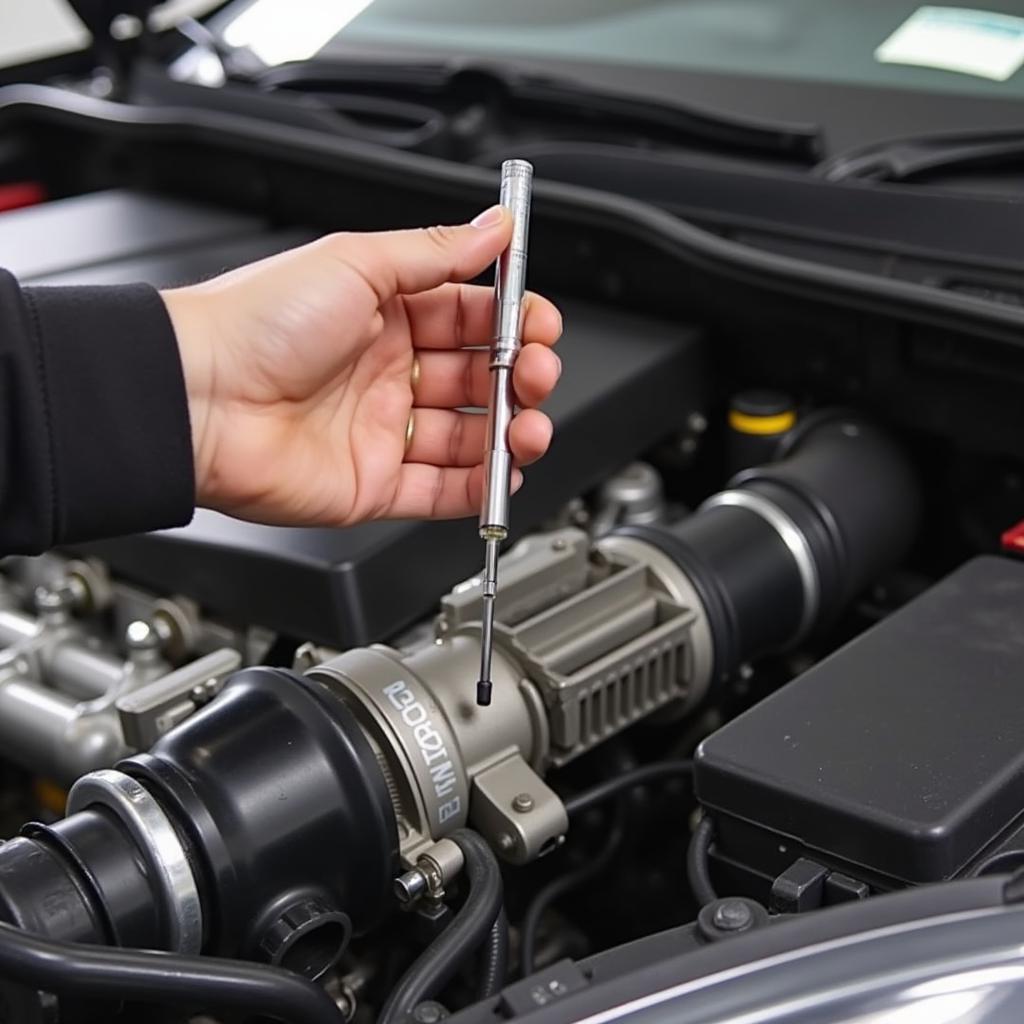Experiencing a “Car Transmission Problem No Move” scenario is every driver’s nightmare. Suddenly, your car refuses to budge, leaving you stranded and frustrated. This comprehensive guide will explore the common causes of a car not moving despite being in gear, and offer practical solutions for troubleshooting and fixing this issue. We’ll cover everything from simple checks to more complex mechanical failures, empowering you to diagnose the problem and determine the best course of action.
A car transmission’s job is to transfer power from the engine to the wheels, allowing you to change speeds and maintain control. When this intricate system malfunctions, your car might not move at all. Identifying the root cause quickly is crucial to minimizing further damage and getting back on the road. Let’s dive into the potential culprits behind your car transmission problem. car stalling problems can also cause similar symptoms.
Common Causes of a Car Transmission Problem No Move
Several factors can contribute to a car’s inability to move even when in gear. These range from simple oversights to more serious mechanical issues. Here are some of the most common causes:
Low or Contaminated Transmission Fluid
Transmission fluid is the lifeblood of your car’s transmission system. Low fluid levels or contaminated fluid can severely impede its ability to function correctly, leading to a no-move situation. Check your transmission fluid level using the dipstick, ensuring the fluid is clean and free of debris.
Faulty Shifter Cable or Linkage
The shifter cable or linkage connects your gear shifter to the transmission. A damaged or disconnected cable can prevent the transmission from engaging properly, resulting in the car not moving. Inspect these components for any signs of wear, damage, or disconnection.
Damaged Torque Converter
The torque converter is a crucial component in automatic transmissions. It acts as a fluid coupling between the engine and transmission. A malfunctioning torque converter can prevent power from reaching the wheels, causing a no-move scenario.
Worn or Damaged Clutch (Manual Transmission)
In manual transmissions, the clutch is responsible for engaging and disengaging the engine from the transmission. A worn or damaged clutch can make it impossible to shift gears or transfer power effectively, leading to the car not moving.
Internal Transmission Damage
Internal transmission damage, such as worn gears, damaged clutches, or broken bands, can cause a complete loss of drive. These issues typically require professional repair or a transmission rebuild.
Electrical Problems
Electrical problems, such as a faulty transmission control module (TCM) or wiring issues, can disrupt the transmission’s operation, preventing it from shifting or engaging gears.
Parking Brake Engaged
Sometimes, the simplest explanation is the correct one. Ensure your parking brake isn’t engaged. This can prevent the car from moving, even if the transmission is functioning correctly.
Troubleshooting a Car That Won’t Move
Here’s a step-by-step guide to troubleshoot your “car transmission problem no move” issue:
- Check the Obvious: Make sure the parking brake is disengaged and the car is in the correct gear.
- Inspect the Transmission Fluid: Check the fluid level and condition. If it’s low or dirty, top it off or change it.
- Check for Leaks: Look for any signs of transmission fluid leaks under the car. Leaks can indicate a more serious problem.
- Listen for Unusual Noises: Unusual grinding, whining, or clunking noises from the transmission can point towards internal damage.
- Try Starting the Car in Neutral: If the car starts in neutral but not in gear, it could indicate a problem with the shifter linkage or neutral safety switch.
- Check the Shift Lever: Ensure the shift lever moves freely and engages different gears.
- Inspect the Clutch (Manual Transmission): If you have a manual transmission, check the clutch pedal for proper operation and feel.
 Checking Car Transmission Fluid
Checking Car Transmission Fluid
“A simple fluid check can save you hundreds of dollars in repairs. Always start with the basics,” advises John Miller, a seasoned automotive technician with over 20 years of experience.
car problems in the front can sometimes mimic transmission issues.
When to Seek Professional Help
If you’ve performed these basic checks and your car still won’t move, it’s time to seek professional help. A qualified mechanic can diagnose the problem accurately and recommend the necessary repairs. Don’t delay seeking professional help, as driving a car with transmission problems can exacerbate the issue and lead to more costly repairs.
2009 smart car transmission problems might be model-specific, so consulting a specialist is advised.
Conclusion
Facing a “car transmission problem no move” situation can be daunting, but understanding the potential causes and knowing how to troubleshoot the issue can empower you to take the right steps. Remember, regular maintenance and prompt attention to any warning signs can prevent many transmission problems. If you’re unsure about any step, consult a professional mechanic for a proper diagnosis and repair. Don’t let a transmission problem keep you off the road. Contact AutoTipPro at +1 (641) 206-8880 or visit our office at 500 N St Mary’s St, San Antonio, TX 78205, United States for expert assistance.
 Mechanic Inspecting Car Transmission
Mechanic Inspecting Car Transmission
solenoid problems car can sometimes affect the transmission.
car braking problems can also lead to a car not moving, but for different reasons. Always check the basics first.





Leave a Reply